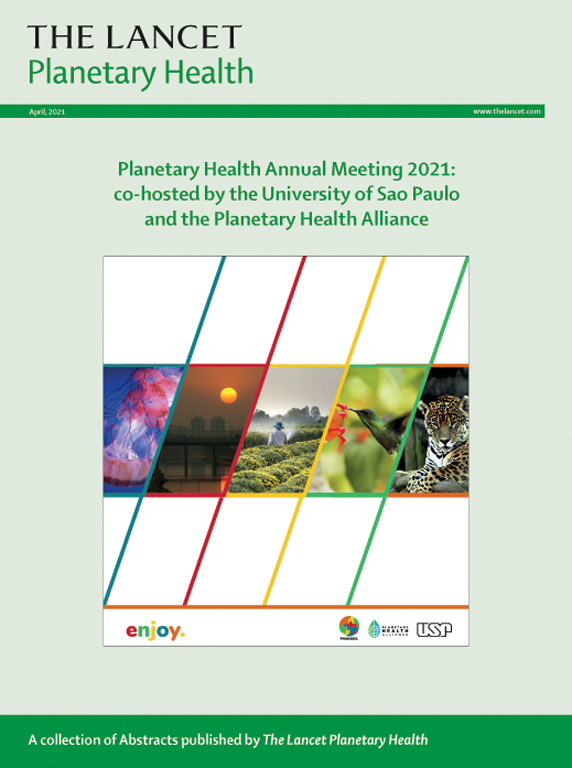气候和白纹伊蚊种群对欧洲登革热和基孔肯雅热暴发的影响:事件发生时间分析
IF 21.6
1区 医学
Q1 ENVIRONMENTAL SCIENCES
引用次数: 0
摘要
亚洲虎蚊(白纹伊蚊)的迅速蔓延对欧洲的公共卫生构成了显著威胁,因为它能够传播登革热和基孔肯雅热等热带病。我们的目标是量化促进和加速欧洲从散发性虫媒病毒暴发向伊蚊传播疾病地方病转变的潜在驱动因素,重点是登革热和基孔肯雅热暴发。方法采用时间-事件分析方法,调查在欧盟领土统计单位命名法(NUTS) 3地区白纹伊蚊与本土登革热和基孔肯雅热暴发之间的时间间隔。我们整合了来自欧洲疾病预防和控制中心、世卫组织、技术和监测报告以及其他昆虫学数据来源的数据,这些数据来自1990年(白纹伊蚊首次被引入欧盟国家)至2024年的区域白纹伊蚊建立和随后的登革热和基孔肯雅热暴发。主要结果是生存时间(即从白纹伊蚊出现到登革热或基孔肯雅热暴发的时间),通过单变量和多变量回归考虑了土地利用类型、人口和社会经济因素、输入病例和气候变量。为了解决复发性疫情,我们应用了Cox比例风险模型的Andersen-Gill扩展来分析所有事件。我们根据夏季平均温度高于或低于20°C进一步将地区分为温暖组和凉爽组,并使用Kaplan-Meier曲线和log-rank检验进行分层分析,以评估这些组之间的差异。我们还在三种不同的共享社会经济途径(ssp;SSP1-2·6、SSP3-7·0和ssp5 - 8.5)来评估气候变化对暴发危害估计的未来影响。结果1990年至2024年,从第一个区域建立白纹伊蚊到第一次登革热或基孔肯雅热暴发的时间间隔从25年缩短到不到5年。同样,从第一次爆发到第二次爆发的间隔从1990年的12年缩短到2024年的不到1年。我们的回归分析表明,日益有利的气候条件在这一趋势中发挥了重要作用。夏季平均气温升高1℃,风险比为1.55 (95% CI为1.30 - 1.85;P< 0.0001),控制了卫生保健支出、输入病例和土地使用类型。在较温暖的地区,首次爆发事件可能比较冷的地区发生得更频繁和更早(log-rank p= 0.088),这反映出随着时间的推移,保持无爆发的可能性较低。在极端气候变化情景下,这一趋势预计将加剧,根据ssp5 - 8.5情景的预测,到2060年代,登革热或基孔肯雅热疫情将比1990-2024年基线期增加近5倍。本研究的发现强调了欧盟迫切需要强有力的控制措施、加强监测和早期预警系统,以减轻该地区伊蚊传播疾病即将发生的风险。资助欧盟的“地平线欧洲”。本文章由计算机程序翻译,如有差异,请以英文原文为准。
Impact of climate and Aedes albopictus establishment on dengue and chikungunya outbreaks in Europe: a time-to-event analysis
Background
The rapid spread of the Asian tiger mosquito (Aedes albopictus) poses a notable public health threat in Europe due to its ability to transmit tropical diseases such as dengue and chikungunya. We aimed to quantify the underlying drivers facilitating and accelerating Europe's transition from sporadic arbovirus outbreaks to Aedes-borne disease endemicity, focusing on dengue and chikungunya outbreaks.
Methods
We conducted a time-to-event analysis to investigate the period between establishment of Ae albopictus and autochthonous dengue and chikungunya outbreaks across Nomenclature of Territorial Units for Statistics (NUTS) 3 regions in the EU. We incorporated data from the European Centre for Disease Prevention and Control, WHO, technical and surveillance reports, and other entomological data sources on regional Ae albopictus establishment and subsequent dengue and chikungunya outbreaks from 1990 (when Ae albopictus was first introduced to an EU country) to 2024. The main outcome was survival time (ie, the time from Ae albopictus establishment to an outbreak of dengue or chikungunya), accounting for land-use types, demographic and socioeconomic factors, imported cases, and climatic variables via univariable and multivariable regression. To address recurrent outbreaks, we applied the Andersen–Gill extension of the Cox proportional hazards model to analyse all events. We further stratified regions into warm and cool groups on the basis of mean summer temperatures above or below 20°C and conducted a stratified analysis with Kaplan–Meier curves and the log-rank test to evaluate differences between these groups. We also estimated projected outbreak hazards from the 2030s to the 2060s at a decadal scale under three distinct shared socioeconomic pathways (SSPs; SSP1–2·6, SSP3–7·0, and SSP5–8·5) to assess the future impact of climate change on outbreak hazard estimates.
Findings
Between 1990 and 2024, the interval from the first NUTS 3 regional establishment of Ae albopictus to the first outbreak of dengue or chikungunya decreased from 25 years to less than 5 years. Similarly, the interval from the first outbreak to the second outbreak decreased from 12 years in 1990 to less than 1 year in 2024. Our regression analyses indicate that increasingly favourable climatic conditions play a significant role in this trend. A 1°C rise in mean summer temperature was associated with a hazard ratio of 1·55 (95% CI 1·30–1·85; p<0·0001) after controlling for health-care expenditure and imported cases and land-use type. First outbreak events might have occurred more frequently and earlier in warmer regions than cooler ones (log-rank p=0·088), reflecting a lower probability of remaining outbreak-free over time. This trend is expected to intensify under extreme climate change scenarios, with projections under the SSP5–8·5 scenario suggesting an almost five-fold increase in dengue or chikungunya outbreaks by the 2060s, relative to the 1990–2024 baseline period.
Interpretation
The findings in this study underscore the pressing need for robust control measures, enhanced surveillance, and early warning systems in the EU to mitigate the impending risk of Aedes-borne disease endemicity in the region.
Funding
European Union's Horizon Europe.
求助全文
通过发布文献求助,成功后即可免费获取论文全文。
去求助
来源期刊

Lancet Planetary Health
Multiple-
CiteScore
28.40
自引率
2.30%
发文量
272
审稿时长
8 weeks
期刊介绍:
The Lancet Planetary Health is a gold Open Access journal dedicated to investigating and addressing the multifaceted determinants of healthy human civilizations and their impact on natural systems. Positioned as a key player in sustainable development, the journal covers a broad, interdisciplinary scope, encompassing areas such as poverty, nutrition, gender equity, water and sanitation, energy, economic growth, industrialization, inequality, urbanization, human consumption and production, climate change, ocean health, land use, peace, and justice.
With a commitment to publishing high-quality research, comment, and correspondence, it aims to be the leading journal for sustainable development in the face of unprecedented dangers and threats.
 求助内容:
求助内容: 应助结果提醒方式:
应助结果提醒方式:


